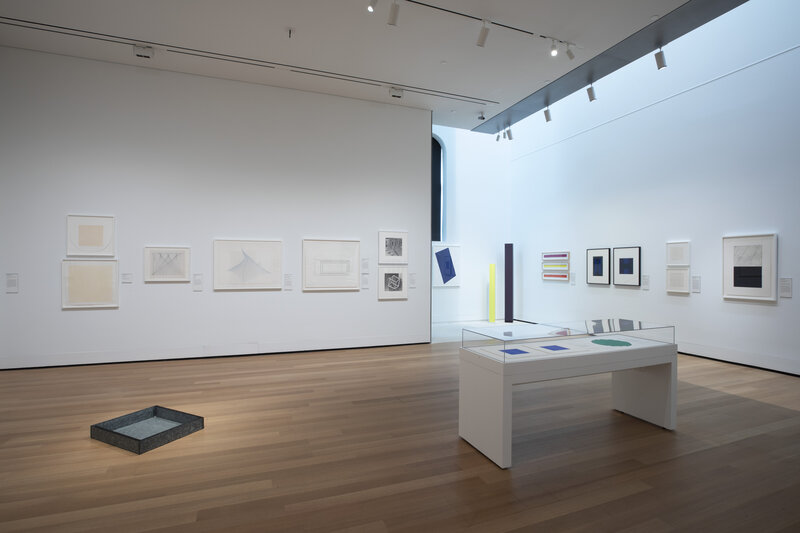Minimalism, a thematic installation of prints and drawings from the collection, is now on view in the Gallery’s fourth-floor exhibition spaces. It traces the genre from its beginnings in the mid-1960s, when a group of New York–based artists began to focus on the pure, clean elements of materiality, geometry, color, and hard edges in their work. They avoided emotional content and metaphor and deemphasized the maker’s hand. Known as Minimalists, these artists chose a precise economy of media and established parameters or even systems to govern the making of their work. Minimalism has often been described as a reaction to the Abstract Expressionist movement of the late 1940s and 1950s, which championed painterly execution and fluidity.
Minimalism Installation On View through June 25, 2023

View of the permanent-collection installation Minimalism

View of the permanent-collection installation Minimalism
From their beginnings, Minimalist artists embraced working in drawing and printmaking. As one of the most ubiquitous and simplest of materials, paper was a support that fit beautifully with their pared-down aesthetic. Minimalists also used industrial materials, like wood, iron, and wire, to create three-dimensional objects. Scattered throughout this presentation are small-scale sculptures that generate exciting dialogues with the two-dimensional works on paper. Through a concentration on mass, shape, color, surface, and line, across media and across time, these prints, drawings, and sculptures emphasize both spatial relationships and displacements. As a movement, Minimalism has never been completely eclipsed; its legacy and influence live on in the practices of later artists such as Jennie C. Jones, whose work is also featured in the installation.
Read more about the installation in the spring 2023 magazine
Elisabeth (Lisa) Hodermarsky
The Sutphin Family Curator of Prints and Drawings